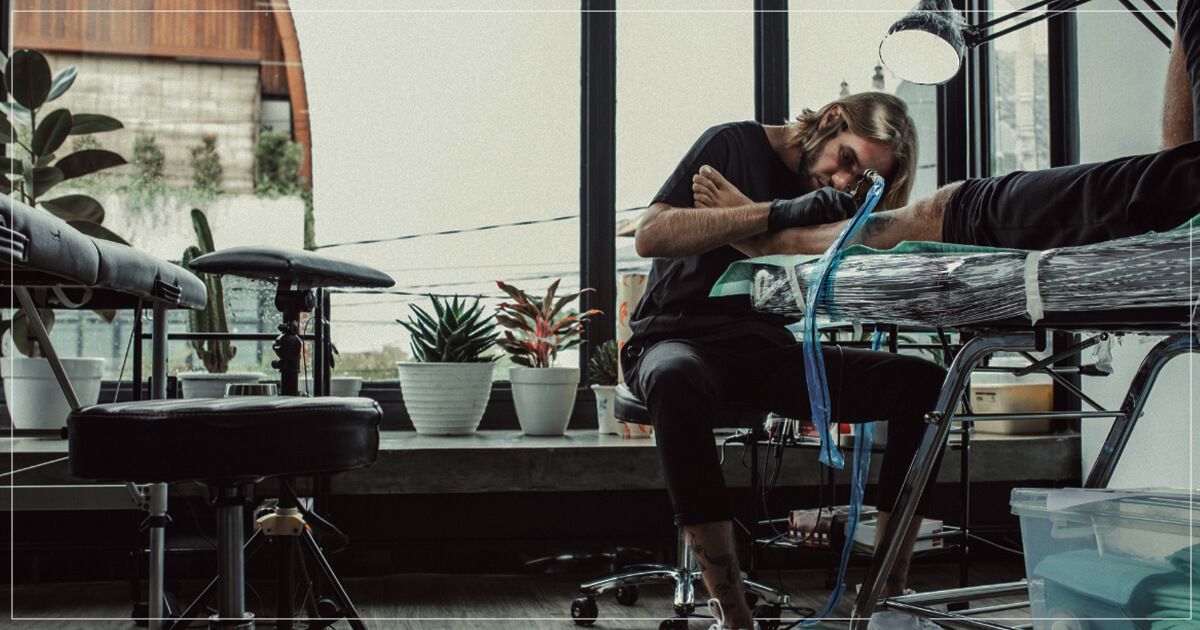
From figuring out what you want to sitting in the chair for your first session, there's a process involved that goes beyond just picking a design. Knowing what to expect can make your experience smoother, less stressful, and more enjoyable. In this post, we’ll walk you through a typical tattoo timeline—from the first message you send to your artist allllllll the way to a finished piece.
Step 1: The Initial Inquiry
Most tattoo journeys start with a message or visit to the studio. You’ll be asked to provide a few key details: the general idea of your design, size, placement, budget, and any reference images. This helps the studio match you with the right artist and set up a consultation if needed.
For example, if a client reached out about a floral shoulder piece and mentioned they liked fine line black and grey work. We would pair them with an artist who specializes in black and grey, fine line designs.
Step 2: The Consultation
Consultations are usually recommended for custom pieces, larger-scale work, or anything that requires placement planning or significant design collaboration. Not every tattoo needs a consultation. Smaller, straightforward designs—like simple script or symbols—can often be booked directly without a separate planning session. If you’re unsure, the front desk or artist can let you know what’s needed based on your idea.
Step 3: Booking & Design Time
Once you’ve approved the direction and paid your deposit, your artist starts working on your custom design. This step varies—some designs take a few days, others a few weeks. If revisions are needed, your artist will guide you through them.
Step 4: The Tattoo Sessions
Depending on the size and complexity of your tattoo, this could be one session or several. Healing time between sessions is usually 2–4 weeks.
Step 5: Healing & Aftercare
Once your tattoo is finished, aftercare becomes the priority. Your artist will provide specific instructions based on your skin type and the specifics of the tattoo. Keeping it clean, avoiding tight clothing, and applying a fragrance-free lotion are common steps. Larger pieces may take about two weeks to peel and another few weeks to fully settle in. Most tattoos take about 4–6 weeks to heal completely, though the skin may look slightly dry or shiny for a bit longer.
A Healing Timeline
Days 2–3:
- The tattoo may appear duller/cloudier as the skin heals.
- Scabs may form.
- Ink may run into the sink during washing.
Days 4–6:
- Avoid picking at scabs; they may be raised, but should not be thick.
- Any redness should start to fade.
Days 6–14:
- Scabs will begin to harden and flake off naturally. Avoid picking at scabs to prevent pulling out ink and scarring.
- Skin may feel itchy; use fragrance-free, alcohol-free moisturizer.
- If the tattoo remains red and swollen, consult a tattoo artist or healthcare professional for possible infection.
Step 6: The Touch-Up (If Needed)
After healing, some tattoos may need a quick touch-up. This is totally normal, especially for areas that rub against clothing or have lighter shading. Touch-ups are usually included or discounted if scheduled within a certain time frame.
Final Thoughts
Every tattoo is unique, and so is every timeline. Some designs come together in a single day, while others unfold over months. Whether your piece needs a detailed consultation or can get done quickly, the key is clear communication and working with an artist you trust. If you’re ready to start your own journey, don’t be afraid to ask questions, bring ideas, and trust the process—every great tattoo begins with a conversation.
